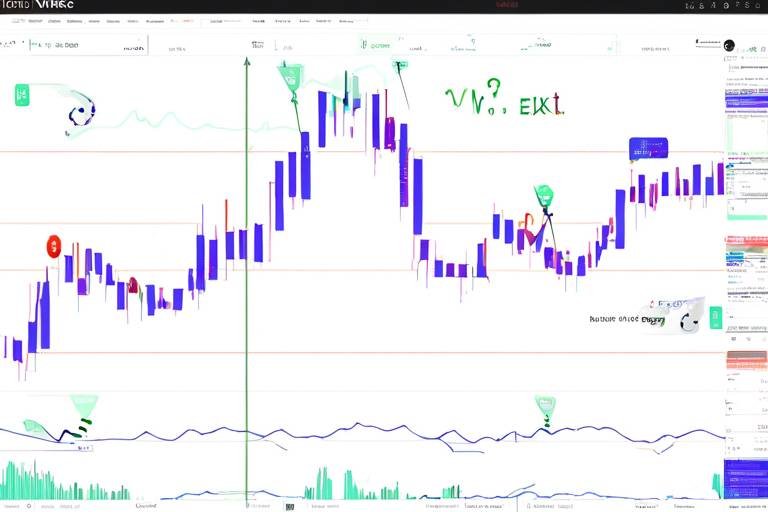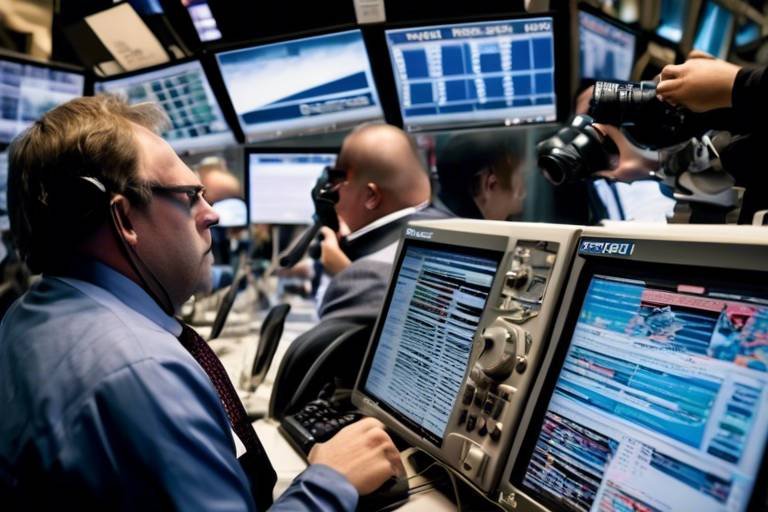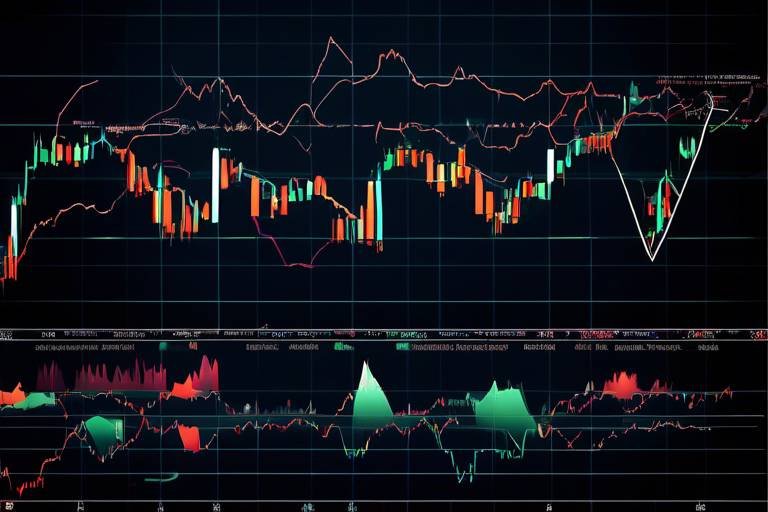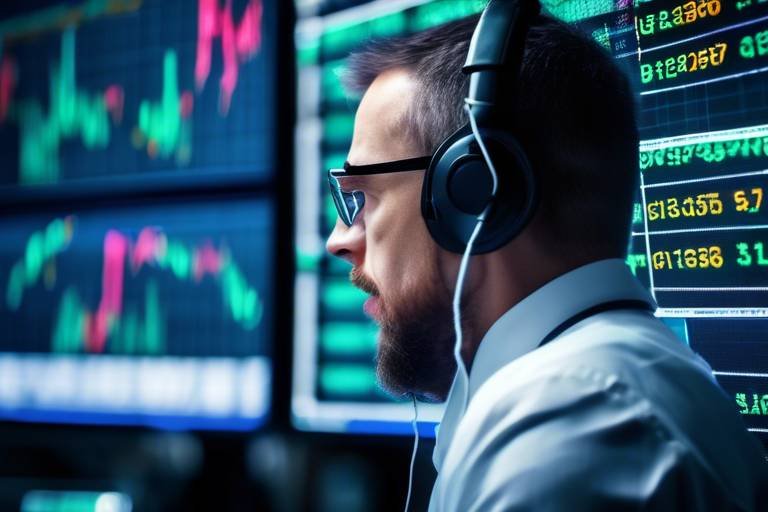How to Utilize Volume Analysis for Crypto Trading Success
In the fast-paced world of cryptocurrency trading, understanding the nuances of market behavior is essential to achieving success. One of the most powerful tools at a trader's disposal is volume analysis. By examining the volume of trades—essentially, how many coins are bought and sold over a specific timeframe—traders can gain insights into market trends, sentiment, and potential price movements. Think of volume as the heartbeat of the market; it tells you whether the market is alive and kicking or just flatlining. So, how can you harness this knowledge to enhance your trading strategies? Let’s dive in!
Volume is more than just a number; it’s a reflection of market activity. When you see a spike in volume, it often indicates that something significant is happening in the market. For instance, if a cryptocurrency experiences a sudden increase in trading volume, it could mean that traders are reacting to news, speculation, or even market manipulation. Conversely, low volume might suggest a lack of interest or uncertainty among traders. By keeping an eye on volume, you can better gauge the strength of price movements and identify potential trading opportunities.
Volume analysis plays a critical role in confirming trends and making informed trading decisions. For instance, if a cryptocurrency is on an upward trajectory and the volume is increasing, this can be a strong indicator that the trend is likely to continue. On the flip side, if prices are rising but volume is declining, it could signal a weakening trend and potential reversal. This is why relying solely on price charts can be misleading; volume provides the context that helps you interpret price movements more accurately.
Understanding the relationship between volume and market sentiment can be a game-changer for traders. High trading volume often correlates with strong interest in a particular asset, which can lead to significant price movements. For example, if you notice a surge in volume alongside a price increase, it’s a good sign that buyers are stepping in with confidence. On the other hand, low volume during price declines may indicate that traders are hesitant or indecisive. By analyzing these trends, you can better position yourself to capitalize on market movements.
Volume analysis can help you identify crucial bullish and bearish signals. A surge in volume during a price increase typically suggests strong buying interest, signaling a potential continuation of the bullish trend. Conversely, if you see rising volume during a price decline, it may indicate significant selling pressure. By recognizing these signals, you can make more informed decisions about when to enter or exit trades.
Recognizing specific volume patterns can provide valuable insights into potential market movements. Some key volume patterns to watch for include:
- Volume Spikes: A sudden increase in volume can indicate a breakout or breakdown.
- Consistent Volume Trends: Sustained high or low volume can signal a strong trend.
- Volume Divergence: When price moves in one direction while volume moves in another, it may indicate a potential reversal.
By keeping an eye on these patterns, you can anticipate market changes and adjust your trading strategies accordingly.
Combining volume analysis with technical indicators can significantly enhance your trading strategies. For instance, using Moving Averages alongside volume trends can help confirm signals. If a cryptocurrency breaks above its moving average with high volume, it’s often a strong bullish signal. Similarly, the Relative Strength Index (RSI) can provide context to volume movements, helping you determine whether an asset is overbought or oversold. By integrating these tools, you can create a more robust trading strategy that takes into account both price action and market sentiment.
Even seasoned traders can fall into traps when interpreting volume data. Here are some common mistakes to avoid:
One of the biggest pitfalls is relying solely on volume without considering other market factors. Volume should always be analyzed in conjunction with price action and market context. For example, a high volume reading doesn’t always mean a bullish trend; it’s crucial to look at the price movement alongside it to get a clearer picture.
Volume can act unpredictably during major news events. Traders should be cautious and consider how news impacts volume, as it may distort typical trading patterns. For instance, a sudden surge in volume due to a regulatory announcement can lead to erratic price movements that may not reflect the underlying market sentiment.
Implementing practical strategies for volume analysis can significantly improve your trading outcomes. Here are some actionable techniques:
- Monitor volume alongside price movements to confirm trends.
- Use volume analysis to identify key support and resistance levels.
- Incorporate volume patterns into your trading plan for better decision-making.
By applying these strategies, you can leverage volume effectively in your trading plans and ultimately enhance your trading performance.
1. What is volume in cryptocurrency trading?
Volume refers to the total amount of a cryptocurrency that has been traded during a specific time period. It is a key indicator of market activity and liquidity.
2. Why is volume analysis important?
Volume analysis helps traders confirm trends, identify reversals, and understand market sentiment, allowing for more informed trading decisions.
3. How can I integrate volume analysis into my trading strategy?
You can combine volume analysis with technical indicators like Moving Averages and RSI to enhance your trading strategy and confirm signals.
4. What are common mistakes to avoid in volume analysis?
Common mistakes include overvaluing volume alone and ignoring volume behavior during news events, which can lead to misguided trades.
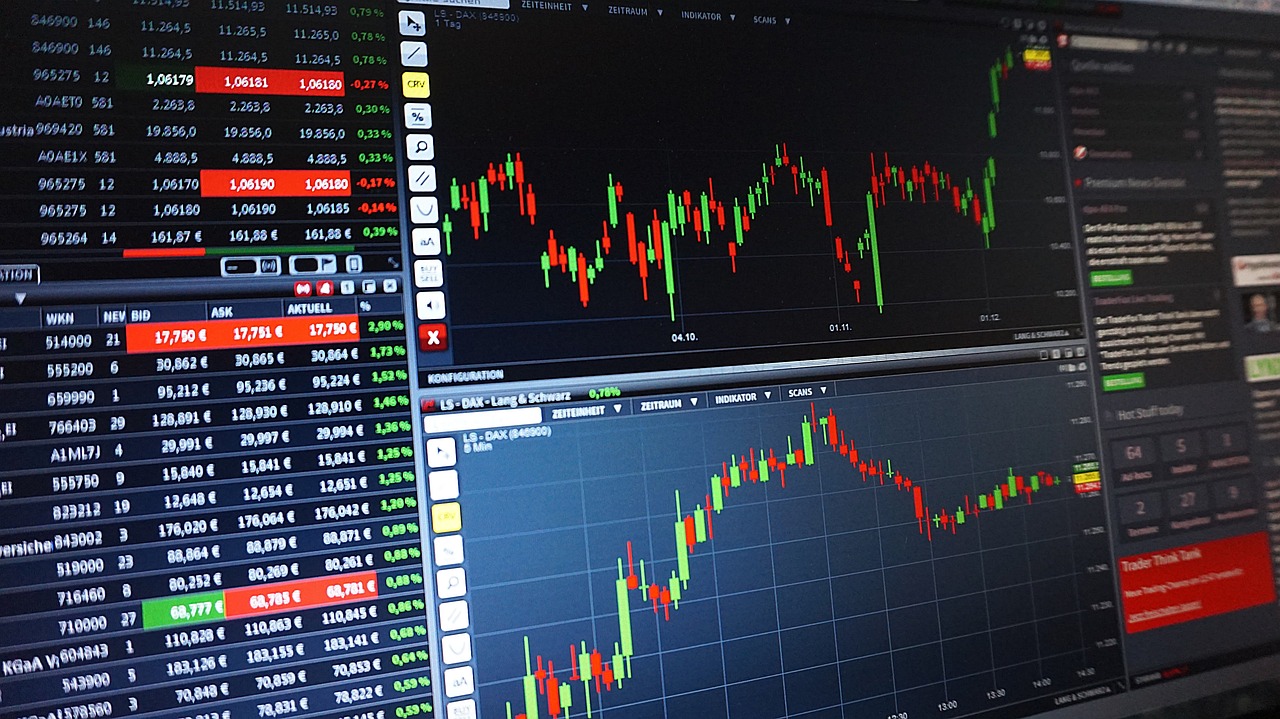
Understanding Volume in Crypto Trading
Volume is one of the most crucial metrics in the world of cryptocurrency trading, acting as a barometer for market activity. It represents the total number of assets traded within a specific timeframe, providing traders with insights into the strength and momentum of price movements. Imagine trying to gauge the popularity of a concert by counting the number of tickets sold; in a similar vein, volume helps traders assess the interest level in a particular cryptocurrency. When volume spikes, it often indicates that something significant is happening in the market, whether it's a major announcement, a new partnership, or a sudden price surge.
Understanding volume can empower traders to make informed decisions based on real market activity instead of relying solely on price charts. For instance, if a trader notices that Bitcoin's price is climbing but the trading volume is low, it might raise a red flag. This scenario suggests that the price increase may not be backed by strong buying interest, leading to potential price corrections. Conversely, a price increase coupled with high volume typically signals robust buying activity, indicating that the trend may continue.
To further illustrate the importance of volume, consider the following table that breaks down the relationship between price movement and trading volume:
| Price Movement | Volume Behavior | Implication |
|---|---|---|
| Price Increase | High Volume | Strong Buying Interest |
| Price Increase | Low Volume | Weak Momentum |
| Price Decrease | High Volume | Strong Selling Pressure |
| Price Decrease | Low Volume | Indecision |
As you can see, volume acts as a confirmatory signal for price movements. Traders should always consider volume in their analysis to avoid falling into the trap of false signals. In addition, understanding the context of volume is essential. For example, if a cryptocurrency has historically low trading volume, a sudden spike might not carry the same weight as a similar spike in a highly traded asset. Therefore, context is key when interpreting volume data.
Another important aspect of volume is its relation to market sentiment. High volume often correlates with strong market interest, which can lead to significant price movements. On the other hand, low volume may indicate a lack of conviction among traders, suggesting that the market is uncertain or waiting for a catalyst to spark activity. This dynamic is crucial for traders looking to identify potential entry and exit points.
In summary, understanding volume in crypto trading is not just about numbers; it's about deciphering the story behind those numbers. By paying close attention to volume trends and their implications, traders can enhance their decision-making process and improve their chances of success in the volatile world of cryptocurrency trading.

The Importance of Volume Analysis
When it comes to trading cryptocurrencies, volume analysis is like having a secret weapon in your trading arsenal. It’s not just about watching the price charts and making guesses; it’s about understanding the underlying activity that drives those prices. Volume analysis offers traders a clearer picture of market dynamics, helping them make informed decisions rather than relying on gut feelings or hunches. Think of it as the heartbeat of the market—when the heartbeat is strong, the market is alive, and when it’s weak, it may be time to tread carefully.
One of the primary reasons volume analysis is so crucial is that it helps validate trends. Imagine you see a cryptocurrency's price skyrocketing; it might be easy to get swept up in the excitement. However, if that price surge is accompanied by high volume, it suggests that a significant number of traders are buying in, indicating a strong trend. On the flip side, if the price is climbing but the volume is low, it could be a sign of a potential reversal or a lack of conviction among buyers. This insight allows traders to confirm whether a trend is genuine or just a fleeting moment of market euphoria.
Moreover, volume analysis aids in spotting potential reversals in the market. For instance, if a cryptocurrency has been in a downtrend and suddenly experiences a spike in volume, it could signal that traders are starting to accumulate the asset, hinting at a possible trend reversal. Conversely, if prices are rising but the volume starts to dwindle, it might indicate that the upward momentum is fading, and traders should prepare for a potential downturn. Understanding these signals can be the difference between riding a profitable wave and getting caught in a market crash.
Another essential aspect of volume analysis is its role in determining market sentiment. High volume often reflects strong interest in a particular asset, suggesting that traders are confident in their positions. In contrast, low volume can indicate uncertainty or indecision among traders. This sentiment can be further analyzed by observing volume trends over time. For instance, if you notice increasing volume over several days while prices are rising, it’s likely that bullish sentiment is building. Conversely, if volume is decreasing as prices rise, it could be a warning sign that the rally is losing steam.
In summary, volume analysis is not just an ancillary tool; it’s a fundamental component of a successful trading strategy. By integrating volume into your analysis, you can:
- Confirm trends and avoid false breakouts.
- Identify potential reversals before they happen.
- Gauge market sentiment and make more informed decisions.
In the fast-paced world of cryptocurrency trading, where emotions can run high and market conditions can shift in an instant, having a solid grasp of volume analysis can significantly enhance your trading success. It empowers you to make decisions based on data rather than emotion, ultimately leading to a more disciplined and strategic approach to trading.
Q1: What is volume in cryptocurrency trading?
A1: Volume refers to the total number of assets traded within a specific timeframe. It helps traders understand market activity and potential price movements.
Q2: How can volume analysis improve my trading strategy?
A2: Volume analysis can confirm trends, identify reversals, and provide insights into market sentiment, allowing for more informed trading decisions.
Q3: Should I rely solely on volume analysis?
A3: No, while volume analysis is important, it should be used in conjunction with other indicators and market context for a comprehensive trading strategy.
Q4: What are common mistakes in volume analysis?
A4: Common mistakes include overvaluing volume alone and ignoring volume patterns during major news events, which can lead to misleading interpretations.
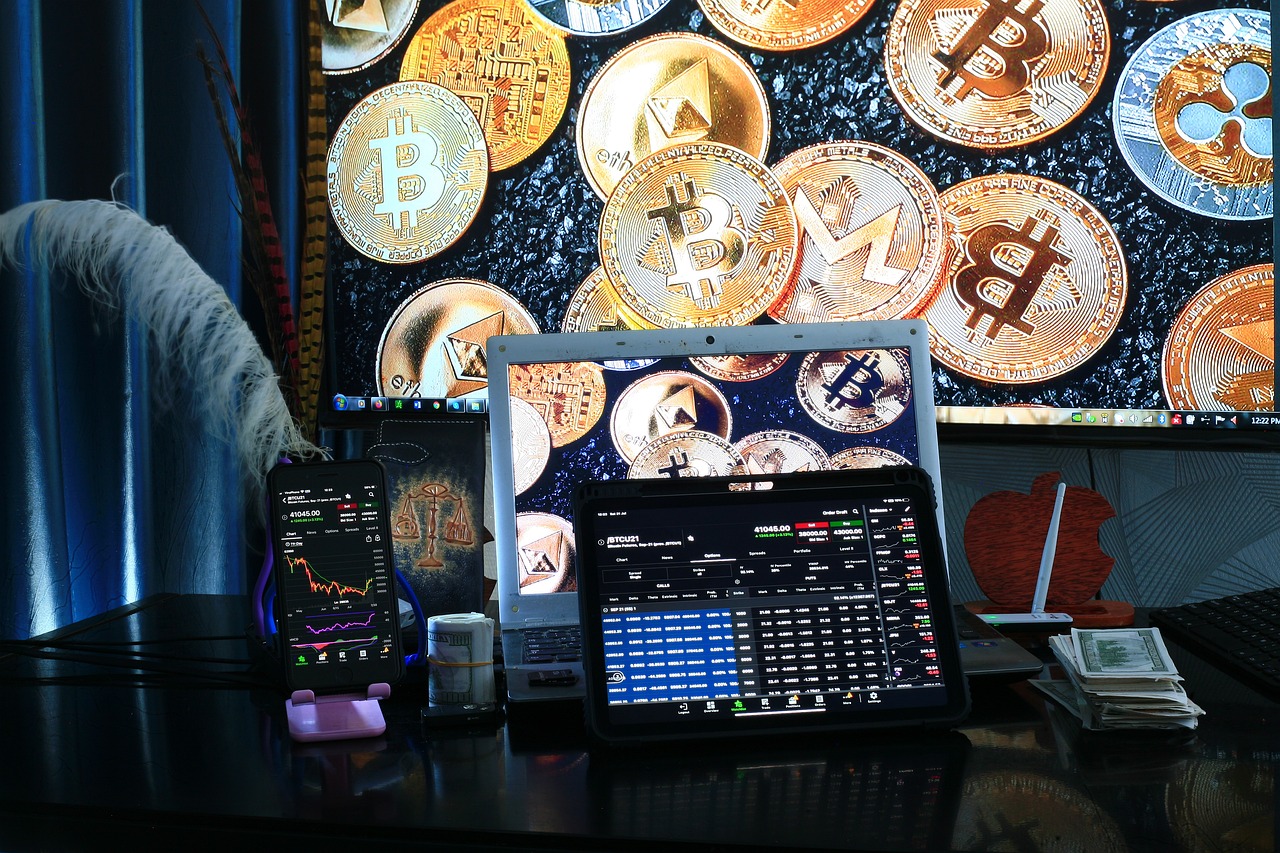
Volume Trends and Market Sentiment
When diving into the world of cryptocurrency trading, understanding volume trends is like having a compass in uncharted waters. Volume tells the story of how active a market is. It reflects the number of assets traded over a specific period, acting as a barometer for market sentiment. But what does this really mean for the average trader? Well, think of volume as the heartbeat of the market; the stronger the pulse, the more alive the trading environment. When traders are enthusiastic, volumes soar, indicating a robust market. Conversely, low volumes can suggest a lack of interest, leaving traders to question whether the market is in a state of indecision or simply a lull before the storm.
High trading volume often correlates with significant price movements, whether upward or downward. For instance, if you notice a rally in the price of a cryptocurrency accompanied by a surge in volume, it’s a strong signal that buyers are stepping in with conviction. On the flip side, if prices are climbing but volume is dwindling, it might raise a red flag. It’s akin to a crowd cheering for a sports team; if the stands are packed and everyone’s on their feet, the energy is palpable. However, if only a handful of fans are clapping, you might wonder if the team is really performing as well as it seems.
Moreover, traders often look for volume spikes as indicators of potential market shifts. For example, if a cryptocurrency suddenly experiences a dramatic increase in trading volume, it could signal the beginning of a new trend or a reversal of the current one. This is particularly relevant during key market events or news releases. A spike in volume can indicate that traders are reacting to new information, which can lead to significant price movements. Understanding these nuances allows traders to position themselves advantageously, riding the waves of market sentiment rather than getting caught in the undertow.
To put this into perspective, let’s consider a hypothetical scenario. Imagine you’re tracking a cryptocurrency that has been trading steadily within a narrow range. Suddenly, you notice a significant increase in volume. This could mean two things: either traders are accumulating positions in anticipation of a breakout, or they are offloading their assets, fearing a downturn. By analyzing the accompanying price movements, you can decipher which scenario is more likely and make a more informed decision. Thus, volume analysis is not just about looking at numbers; it’s about reading the market’s emotions and intentions.
In summary, recognizing volume trends is crucial for gauging market sentiment. It’s not merely a number; it’s a reflection of trader confidence and market dynamics. By paying close attention to these trends, traders can enhance their decision-making process, identifying opportunities that others might overlook. So, the next time you’re analyzing a crypto asset, remember: the volume speaks, and it’s up to you to listen.
- What is volume in cryptocurrency trading?
Volume refers to the total number of assets traded over a specific period, indicating market activity and interest. - How can volume analysis improve my trading?
By understanding volume trends, traders can confirm price movements, identify potential reversals, and gauge overall market sentiment. - Is high volume always a good sign?
Not necessarily. While high volume can indicate strong interest, it's essential to consider the context, such as price movements and market conditions. - What should I do if I see a volume spike?
Analyze the accompanying price action and market context to determine if it signals a potential breakout or a reversal.
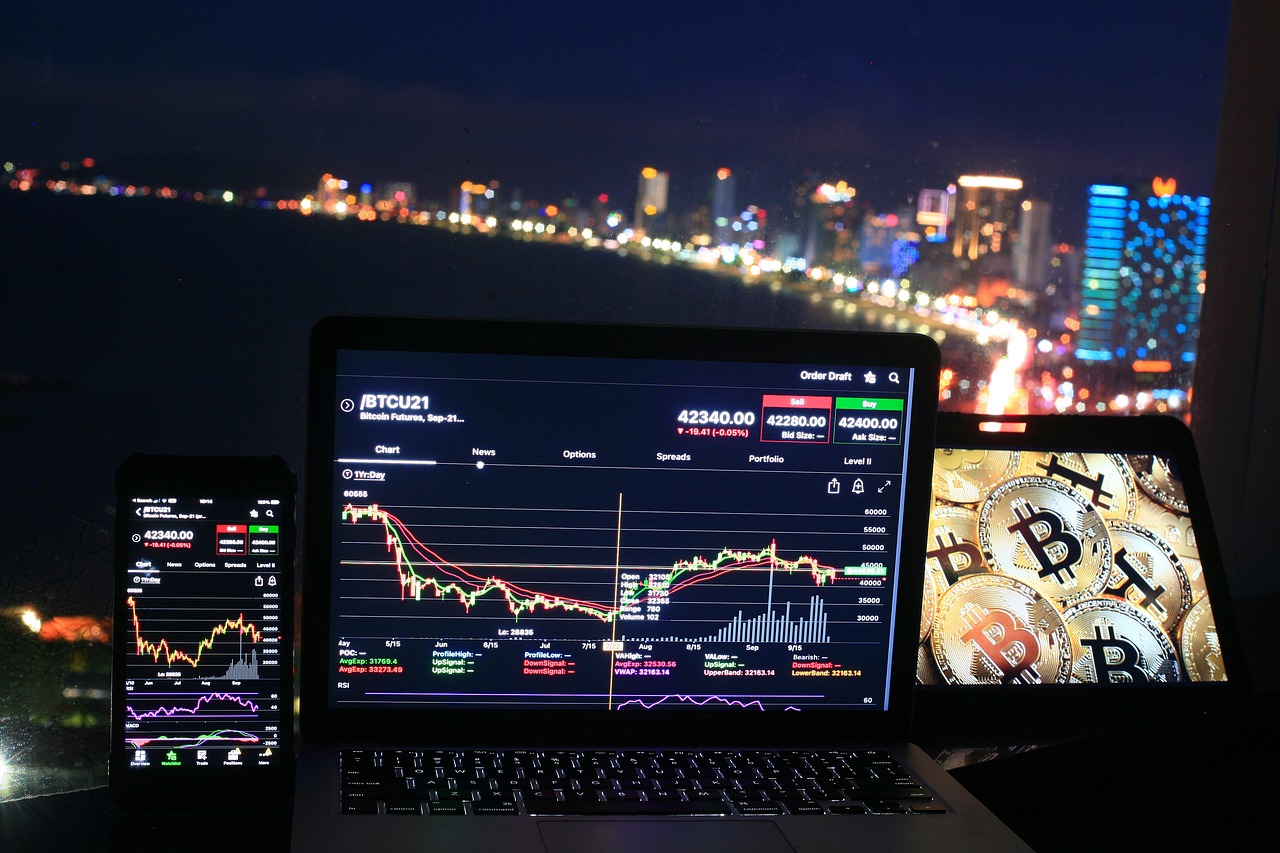
Identifying Bullish and Bearish Signals
Identifying bullish and bearish signals is crucial for any trader looking to navigate the volatile waters of cryptocurrency trading. These signals can provide insights into market sentiment and help traders make informed decisions. But how do you differentiate between a genuine bullish signal and a false alarm? It all comes down to volume analysis and understanding market dynamics.
When you observe a surge in volume during a price increase, this often indicates strong buying interest, suggesting that traders are confident in the upward movement. This scenario is typically a bullish signal, indicating that it might be a good time to enter the market. Conversely, if you see a spike in volume while prices are declining, this can signify selling pressure, which is a classic bearish signal. In such cases, traders may want to consider exiting their positions or even shorting the asset.
To make this even clearer, let’s break down the characteristics of these signals:
- Bullish Signals:
- Volume spikes during price increases
- Consistent upward price movement with increasing volume
- Volume surpassing previous resistance levels
- Bearish Signals:
- Volume spikes during price declines
- Consistent downward price movement with increasing volume
- Volume breaking through previous support levels
Moreover, it's essential to look at the context of these signals. For example, if a bullish signal occurs during a significant market event, it may carry more weight than a signal that appears in a stagnant market. Understanding the broader market environment can help you make more accurate predictions about future price movements.
Another technique to identify these signals is to compare volume against historical data. For instance, if the current volume is significantly higher than the average volume over the past month, this can indicate a strong market trend, whether bullish or bearish. Traders often use volume indicators, such as the Volume Moving Average, to help filter out noise and confirm these signals.
In summary, recognizing bullish and bearish signals through volume analysis is a powerful tool in a trader's arsenal. By paying close attention to volume trends and understanding the market context, you can significantly enhance your trading decisions and improve your overall success in the crypto market.
Q1: What is a bullish signal?
A bullish signal indicates that the price of an asset is likely to rise, often confirmed by an increase in trading volume.
Q2: How do I identify a bearish signal?
A bearish signal suggests that the price of an asset is likely to fall, typically accompanied by a spike in volume during price declines.
Q3: Can volume analysis predict future price movements?
While volume analysis can provide insights into market sentiment and potential price movements, it is not foolproof and should be used in conjunction with other technical indicators.
Q4: How can I improve my volume analysis skills?
Practice is key! Regularly analyze different assets and their volume patterns, and consider using volume indicators to refine your strategies.

Volume Patterns to Watch For
When it comes to crypto trading, recognizing volume patterns can be your secret weapon. These patterns are like the breadcrumbs that lead you to potential trading opportunities. By keeping an eye on certain volume behaviors, you can anticipate market movements and position yourself for success. Here are some key volume patterns that every trader should watch for:
One of the most telling patterns is a volume spike. This occurs when there is a sudden and significant increase in trading volume. When you see a volume spike accompanying a price movement, it often indicates a strong conviction among traders. For instance, if the price of a cryptocurrency suddenly surges with a corresponding spike in volume, it suggests that buyers are stepping in aggressively. Conversely, a volume spike during a price drop can indicate panic selling or strong bearish sentiment.
Another important pattern is the volume divergence. This happens when the price of an asset is moving in one direction while the volume is moving in the opposite direction. For example, if the price is making new highs but the volume is decreasing, it could signal that the upward momentum is weakening. This divergence can serve as an early warning sign for potential reversals, allowing traders to make timely decisions.
Additionally, traders should be on the lookout for volume consolidation. This occurs when the trading volume remains relatively stable over a period, often indicating a period of indecision in the market. When volume consolidates at a low level, it can precede a breakout or breakdown. If the price eventually moves out of this consolidation phase with a surge in volume, it can signal a strong continuation of the trend.
To illustrate these patterns, consider the following table:
| Volume Pattern | Description | Implication |
|---|---|---|
| Volume Spike | A sudden increase in trading volume. | Indicates strong buying or selling interest. |
| Volume Divergence | Price moves in one direction while volume moves in the opposite direction. | Potential reversal signal. |
| Volume Consolidation | Stable volume over a period, often at low levels. | Precedes a breakout or breakdown. |
In summary, keeping an eye on volume patterns can significantly enhance your trading strategy. By understanding these patterns, you can make more informed decisions and improve your chances of success in the volatile world of cryptocurrency trading. Remember, it’s not just about the price; volume tells a story that can guide you through the market's twists and turns.
- What is volume analysis in crypto trading? Volume analysis involves studying the number of assets traded over a specific period to gauge market strength and potential price movements.
- How can I identify bullish and bearish signals using volume? A surge in volume during price increases indicates strong buying interest (bullish), while rising volume during price declines signifies selling pressure (bearish).
- Why is it important to avoid overvaluing volume? Relying solely on volume can lead to misguided trades; it should be used alongside price action and market context for a comprehensive analysis.

Integrating Volume Analysis with Technical Indicators
When it comes to trading in the fast-paced world of cryptocurrencies, relying solely on one method can be a recipe for disaster. This is where the integration of volume analysis with technical indicators comes into play. By combining these two powerful tools, traders can achieve a more comprehensive understanding of market dynamics. Imagine you're a detective piecing together clues; volume analysis provides context to the price movement, while technical indicators help you interpret that context. Together, they form a more complete picture.
To start, let’s consider Moving Averages. These indicators smooth out price data over a specified period, helping traders identify trends. However, when you layer in volume analysis, you can validate those trends more effectively. For instance, if a cryptocurrency's price is rising and the volume is also increasing, this suggests a strong bullish trend. On the flip side, if the price is rising but volume is dwindling, it might be a sign of a false breakout. This is where the magic happens—understanding the relationship between price and volume can help you avoid costly mistakes.
Another key indicator to integrate with volume analysis is the Relative Strength Index (RSI). The RSI measures the speed and change of price movements, providing insights into whether an asset is overbought or oversold. However, the effectiveness of the RSI can be enhanced when you consider the accompanying volume. For example, if the RSI indicates that a cryptocurrency is overbought, but the volume is also high, it could mean that traders are still eager to buy, suggesting that the price may continue to rise. Conversely, if the RSI is high but volume is low, it could indicate a potential reversal.
To illustrate this integration further, let’s take a look at a simple table that summarizes the relationship between volume and various technical indicators:
| Indicator | Volume Confirmation | Implication |
|---|---|---|
| Moving Averages | Increasing volume with price uptrend | Strong bullish signal |
| Relative Strength Index (RSI) | High RSI with high volume | Potential continuation of trend |
| Bollinger Bands | Price touches upper band with high volume | Possible breakout |
| MACD | Crossovers with rising volume | Strengthening trend signal |
In conclusion, integrating volume analysis with technical indicators is not just a best practice; it's essential for traders looking to enhance their decision-making process. By understanding how volume interacts with these indicators, you can make more informed trading decisions, potentially leading to greater success in the volatile world of cryptocurrency. Remember, it’s not just about looking at the numbers; it’s about interpreting what those numbers mean in the context of market sentiment and price action.
As you embark on your trading journey, keep these concepts in mind, and you may find that your trading strategies become more robust and your outcomes more favorable.
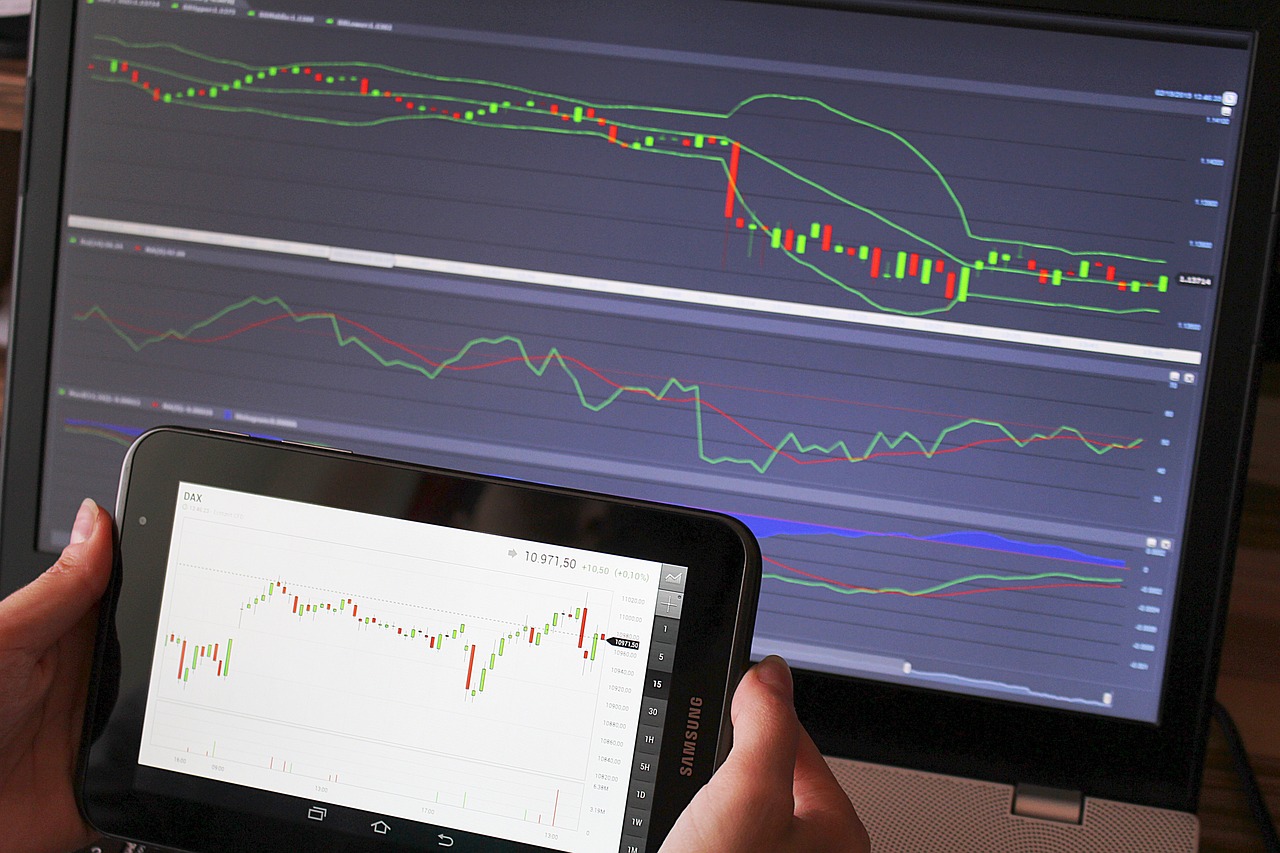
Common Volume Analysis Mistakes
In the fast-paced world of cryptocurrency trading, volume analysis can be a game-changer, but it's not without its pitfalls. Many traders, especially those new to the scene, often fall into the trap of misinterpreting volume data. One of the most common mistakes is overvaluing volume alone. While high trading volumes can indicate strong market interest, relying solely on volume without considering other factors can lead to misguided trades. Think of it like trying to navigate a ship using only the wind direction without accounting for the tides; you might end up off course. It's crucial to use volume in conjunction with price action and market context to create a more comprehensive analysis.
Another significant mistake is ignoring volume during news events. Major news can cause trading volume to spike or plummet unpredictably, distorting typical trading patterns. For instance, when a significant announcement is made, traders might rush to buy or sell, leading to a sudden increase in volume. However, this surge doesn't always reflect genuine market sentiment but rather a reaction to the news. Therefore, it's essential to consider the impact of news on volume. If you ignore this factor, you might misinterpret what the volume is telling you, leading to decisions based on skewed data.
Moreover, many traders fail to recognize that volume can also be misleading during periods of low liquidity. In thinly traded markets, even small transactions can result in large volume spikes, which can create false signals. This is akin to a small pebble causing ripples in a still pond; it may look significant, but it doesn’t indicate a deeper movement. Traders should always be cautious and assess the liquidity of the market before drawing conclusions from volume spikes.
Additionally, another common pitfall is focusing on volume without understanding its context. For example, a sudden increase in volume may not always signify a bullish trend. It could just as easily indicate panic selling or profit-taking. Therefore, it's vital to analyze the context of the volume increase. Are prices rising or falling? Is there a significant news event driving the volume? Understanding the context helps traders make more informed decisions.
Lastly, many traders neglect to track volume over time. Volume is not static; it fluctuates based on a multitude of factors, including market sentiment, trading hours, and external events. By failing to observe volume trends over a period, traders might miss out on important signals. Just like a detective piecing together clues, tracking volume over time can provide insights that one-off spikes cannot. By avoiding these common mistakes and honing your volume analysis skills, you can significantly enhance your trading performance and decision-making process.
- What is volume analysis in crypto trading?
Volume analysis involves examining the number of assets traded over a specific period to gauge market strength and potential price movements.
- Why is volume important in trading?
Volume helps confirm trends, identify potential reversals, and provides a deeper understanding of market activity beyond just price charts.
- How can I avoid common volume analysis mistakes?
By considering volume in conjunction with price action, understanding the context of volume changes, and being mindful of news events and market liquidity.

Overvaluing Volume Alone
When it comes to trading cryptocurrencies, volume can often feel like the holy grail of market analysis. However, overvaluing volume alone can lead traders down a treacherous path. Just because there’s a spike in trading volume doesn’t automatically mean that a price movement is sustainable or indicative of a trend. It’s crucial to understand that volume is just one piece of the puzzle. Think of it as a car's speedometer; it tells you how fast you're going, but it doesn't provide information about the road conditions, traffic, or even whether you're heading in the right direction.
Many traders make the mistake of interpreting high volume as a signal to jump into a trade without considering other factors. For instance, a sudden surge in volume might be the result of a major news event or market manipulation rather than genuine interest from investors. In such situations, the price might rise or fall dramatically, but that doesn’t necessarily mean it will hold. Thus, relying solely on volume can create a false sense of security.
Moreover, it’s essential to combine volume analysis with other indicators to create a more comprehensive trading strategy. Here are a few critical elements to consider alongside volume:
- Price Action: Always analyze how the price is behaving in conjunction with volume. A price increase on high volume is more reliable than the same increase on low volume.
- Market Sentiment: Gauge the mood of the market through news and social media sentiment. This can provide context for volume changes.
- Technical Indicators: Use tools such as Moving Averages or the Relative Strength Index (RSI) to confirm the signals given by volume trends.
In summary, while volume is undoubtedly a vital metric in cryptocurrency trading, it should never be the sole basis for making trading decisions. Instead, consider it as part of a broader strategy that incorporates various factors, ensuring that your trades are informed and calculated. After all, in the world of crypto trading, a well-rounded approach is often the key to success.
Q: What is the significance of volume in crypto trading?
A: Volume indicates the number of assets traded over a specific period, helping traders assess market strength and potential price movements.
Q: Can I rely solely on volume to make trading decisions?
A: No, it's important to combine volume analysis with other factors such as price action and technical indicators for a comprehensive trading strategy.
Q: How does news affect trading volume?
A: Major news events can cause unpredictable volume spikes or drops, which may distort typical trading patterns. Always consider the impact of news on volume.
Q: What are some common mistakes in volume analysis?
A: Common mistakes include overvaluing volume alone, ignoring volume during news events, and failing to consider market context.
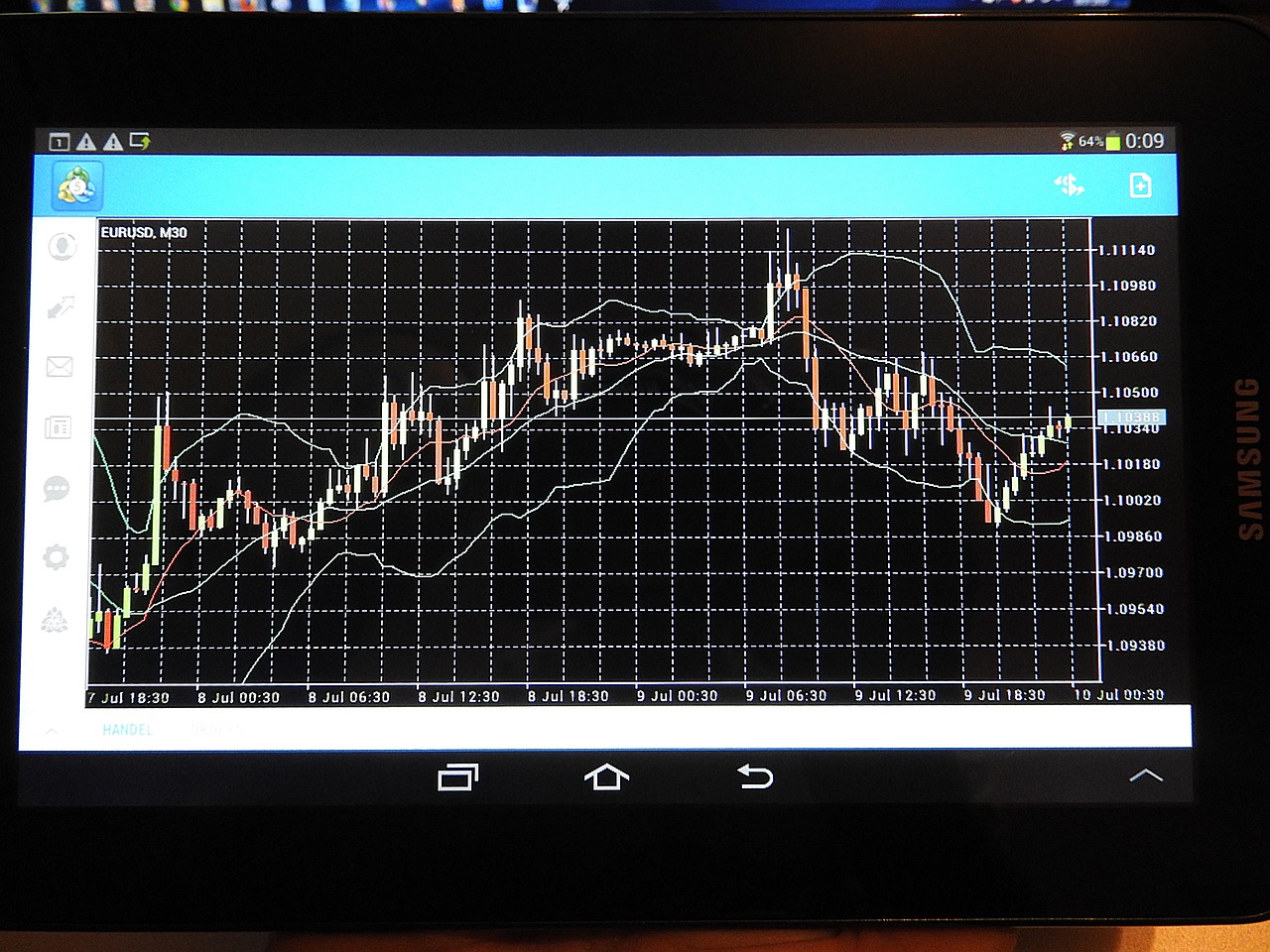
Ignoring Volume During News Events
When it comes to trading cryptocurrencies, one of the biggest mistakes traders often make is . Why is this a problem? Well, news events can dramatically alter market dynamics, creating a whirlwind of trading activity that can mislead even the most seasoned traders. Picture it like a sudden storm; just when you think you have the weather figured out, a torrential downpour changes everything. In the world of crypto, these downpours can manifest as major announcements, regulatory news, or even market rumors.
During significant news events, volume can behave unpredictably. For instance, a positive announcement about a cryptocurrency project might lead to a surge in buying interest, resulting in a spike in volume. Conversely, negative news can trigger panic selling, leading to a rapid increase in volume as traders rush to exit their positions. This volatility can distort typical trading patterns, making it crucial for traders to remain vigilant. Ignoring volume during such pivotal moments can lead to misguided trades, as the usual indicators may not hold true.
To navigate this complexity, traders should consider a few key strategies:
- Stay Updated: Always keep an eye on the news cycle. Understanding the context of the news can provide clarity on how it may impact trading volume.
- Analyze Volume Trends: Before and after a news event, analyze how volume trends shift. Are traders buying or selling? This can offer insights into market sentiment.
- Use Caution: If volume spikes unexpectedly, it might be a sign to reassess your trading strategy. Don't jump to conclusions based on price movements alone.
In summary, ignoring volume during news events is like sailing a ship without checking the weather forecast. You might think you’re on course, but a sudden storm can throw you off track. By paying attention to volume in conjunction with news events, traders can make more informed decisions, ultimately improving their chances of success in the volatile world of cryptocurrency trading.
- What is volume analysis in crypto trading? Volume analysis refers to evaluating the number of assets traded over a specific period to gauge market strength and potential price movements.
- Why is volume important during news events? Volume can indicate the level of interest or panic among traders, helping to understand market sentiment and potential future price movements.
- How can I incorporate volume analysis into my trading strategy? Combine volume analysis with technical indicators and be mindful of news events to make more informed trading decisions.
- What are common mistakes in volume analysis? Overvaluing volume alone and ignoring volume during news events are two common pitfalls that can lead to poor trading decisions.

Practical Strategies for Volume Analysis
When it comes to leveraging volume analysis in your crypto trading, having a practical approach can make all the difference. First and foremost, it’s crucial to track volume trends over time. This isn’t just about looking at a single day’s trading volume; instead, you should analyze how volume behaves over weeks or even months. For instance, if you notice a consistent increase in volume accompanying a price rise, it’s a strong indicator of bullish sentiment. Conversely, if volume decreases while prices rise, it may signal a potential reversal.
Another effective strategy is to set volume thresholds. By establishing specific volume levels that you consider significant, you can filter out noise and focus on meaningful movements. For example, if the average trading volume for a particular cryptocurrency is 10,000 units, you might set a threshold of 20,000 units to signal a potential trading opportunity. This way, you’re not just reacting to any volume spike but rather focusing on those that exceed your predefined criteria.
Moreover, integrating volume analysis with chart patterns can enhance your trading strategy. For example, if you spot a classic pattern like a cup and handle formation, confirming it with a corresponding increase in volume can add credibility to your trade decision. This synergy between volume and chart patterns helps to validate breakout points, making your entries and exits more precise.
Don’t forget to utilize volume indicators as well. Tools such as the On-Balance Volume (OBV) or the Accumulation/Distribution line can provide deeper insights into the relationship between price and volume. These indicators help you visualize whether money is flowing into or out of a cryptocurrency, giving you a clearer picture of market sentiment. For instance, if the price of a coin is rising but the OBV is falling, it might indicate that the rally is not supported by strong buying interest, which could lead to a price correction.
Lastly, always keep an eye on news and events that could impact trading volume. Major announcements, regulatory changes, or technological advancements can lead to sudden spikes in volume. Understanding the context of these events allows you to anticipate shifts in market behavior. For example, if a well-known exchange announces the listing of a new coin, you can expect a surge in trading volume as traders rush to capitalize on the opportunity.
By employing these practical strategies, you can transform volume analysis from a mere statistic into a powerful tool that enhances your trading decisions. Remember, the key is to remain adaptable and continuously refine your approach as you gain more experience in the ever-evolving world of cryptocurrency trading.
- What is volume analysis in crypto trading? Volume analysis involves examining the number of assets traded over a specific period to gauge market strength and potential price movements.
- How can I use volume analysis to improve my trading? By tracking volume trends, setting volume thresholds, and integrating volume with technical indicators, you can make more informed trading decisions.
- Are there any common mistakes to avoid with volume analysis? Yes, overvaluing volume alone and ignoring volume during major news events can lead to misguided trades.
- What indicators can I use alongside volume analysis? Indicators like the On-Balance Volume (OBV) and the Accumulation/Distribution line can provide additional insights when combined with volume analysis.
Frequently Asked Questions
- What is volume analysis in crypto trading?
Volume analysis refers to the study of the number of assets traded over a specific period. It helps traders understand market activity and gauge the strength of price movements, giving them insights into potential trends and reversals.
- Why is volume important in cryptocurrency trading?
Volume is a key indicator of market strength. High trading volume often signals strong interest in a cryptocurrency, which can lead to significant price movements. Conversely, low volume may indicate a lack of conviction among traders, making it crucial for decision-making.
- How can I identify bullish and bearish signals using volume?
To identify bullish signals, look for a surge in volume during price increases, suggesting strong buying interest. For bearish signals, monitor rising volume during price declines, indicating selling pressure. These patterns can help traders anticipate market movements.
- What are some common mistakes made in volume analysis?
One common mistake is overvaluing volume alone without considering other market factors. Additionally, ignoring volume changes during major news events can lead to misguided trades, as volume may behave unpredictably during such times.
- Can volume analysis be combined with other technical indicators?
Absolutely! Combining volume analysis with indicators like Moving Averages or the Relative Strength Index (RSI) can enhance trading strategies. This approach allows traders to confirm signals and make more informed decisions based on a comprehensive analysis.
- What practical strategies can I use for volume analysis?
Some practical strategies include watching for volume spikes that may indicate potential breakouts, analyzing volume trends to gauge market sentiment, and using volume alongside price action to confirm trading signals. These techniques can significantly improve trading outcomes.





